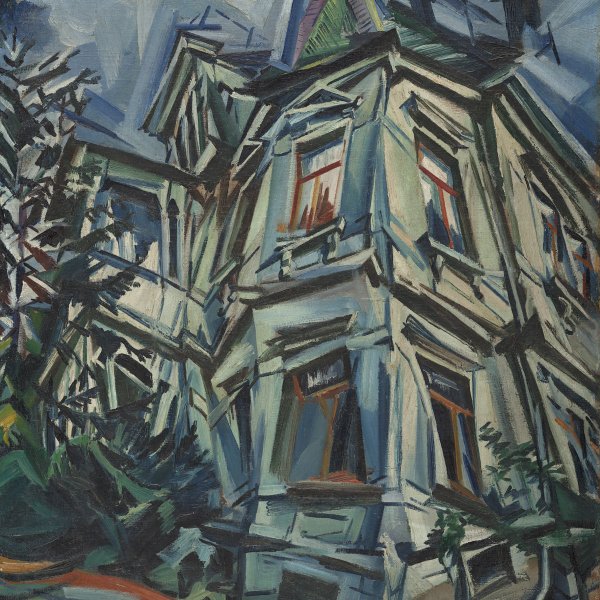Ludwig Meidner
Bernstadt, 1884-Darmstadt, 1966
Ludwig Meidner was a prominent representative of the German Neue Sachlichkeit (New Objectivity). His urban landscapes epitomise the apocalyptic feelings that preceded the First World War. They combine an Expressionistic language with the influence of Italian Futurism and the art of Robert Delaunay.
Meidner began studying at the Königliche Akademie in Breslau in 1903 and moved to Berlin two years later. His job as a designer of poster advertisements enabled him to spend a period in Paris, where he visited the Académie Julian and the Académie Cormon and met Amedeo Modigliani.
On returning to Berlin Meidner came into contact with the Berlin Expressionist avant-garde. After a period of financial straits, he was helped by a patron with the intercession of Max Beckmann. In 1912 he exhibited for the first time with Richard Janthur and Jacob Steinbeck under the pseudonym Die Pathetiker at Herwarth Walden’s Der Sturm gallery. He expressed his rejection of the war before being called up in 1916 and subsequently voiced his disagreement in radical left-wing publications such as Die Aktion. He remained politically active and was involved in the Arbeitsrat für Kunst (Workers’ Council for Art), established in 1918, and the Novembergruppe. In 1919 Meidner began to teach at the Studien-Atelier für Malerei und Plastik in Charlottenburg, but was forced to step down from his post in 1935 by the National Socialist Government. Thereafter he was confined to teaching at a Jewish school in Cologne on account of his Jewish origins. He finally fled to England in 1939. After a difficult period in which he scraped a living by painting portraits, he accepted the German Federal Government’s invitation to return to his country of birth.
In addition to a visual artist, Meidner was also a writer. He prepared the compilation of his literary works for the anthology Im Nacken das Sternemeer published in Leipzig in 1918.
Meidner began studying at the Königliche Akademie in Breslau in 1903 and moved to Berlin two years later. His job as a designer of poster advertisements enabled him to spend a period in Paris, where he visited the Académie Julian and the Académie Cormon and met Amedeo Modigliani.
On returning to Berlin Meidner came into contact with the Berlin Expressionist avant-garde. After a period of financial straits, he was helped by a patron with the intercession of Max Beckmann. In 1912 he exhibited for the first time with Richard Janthur and Jacob Steinbeck under the pseudonym Die Pathetiker at Herwarth Walden’s Der Sturm gallery. He expressed his rejection of the war before being called up in 1916 and subsequently voiced his disagreement in radical left-wing publications such as Die Aktion. He remained politically active and was involved in the Arbeitsrat für Kunst (Workers’ Council for Art), established in 1918, and the Novembergruppe. In 1919 Meidner began to teach at the Studien-Atelier für Malerei und Plastik in Charlottenburg, but was forced to step down from his post in 1935 by the National Socialist Government. Thereafter he was confined to teaching at a Jewish school in Cologne on account of his Jewish origins. He finally fled to England in 1939. After a difficult period in which he scraped a living by painting portraits, he accepted the German Federal Government’s invitation to return to his country of birth.
In addition to a visual artist, Meidner was also a writer. He prepared the compilation of his literary works for the anthology Im Nacken das Sternemeer published in Leipzig in 1918.





